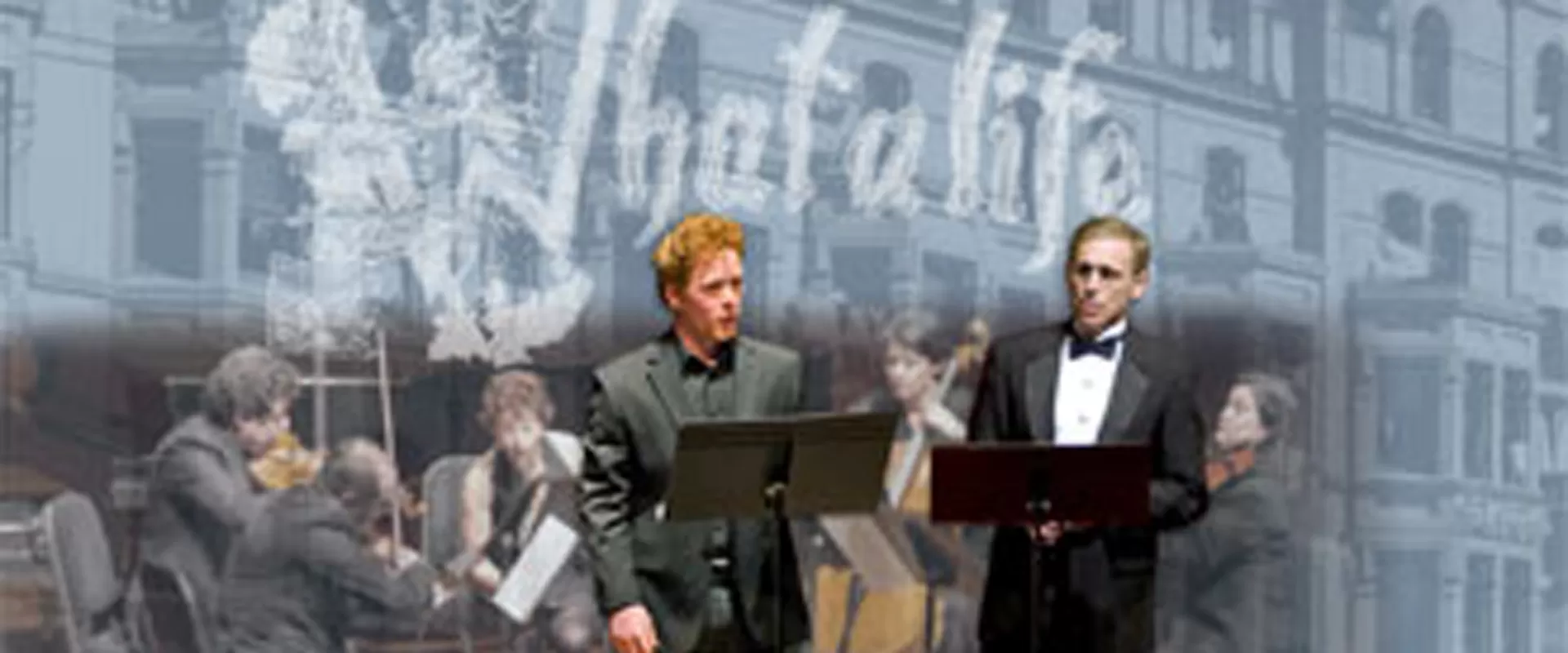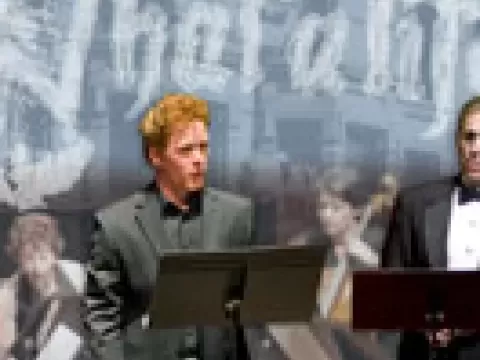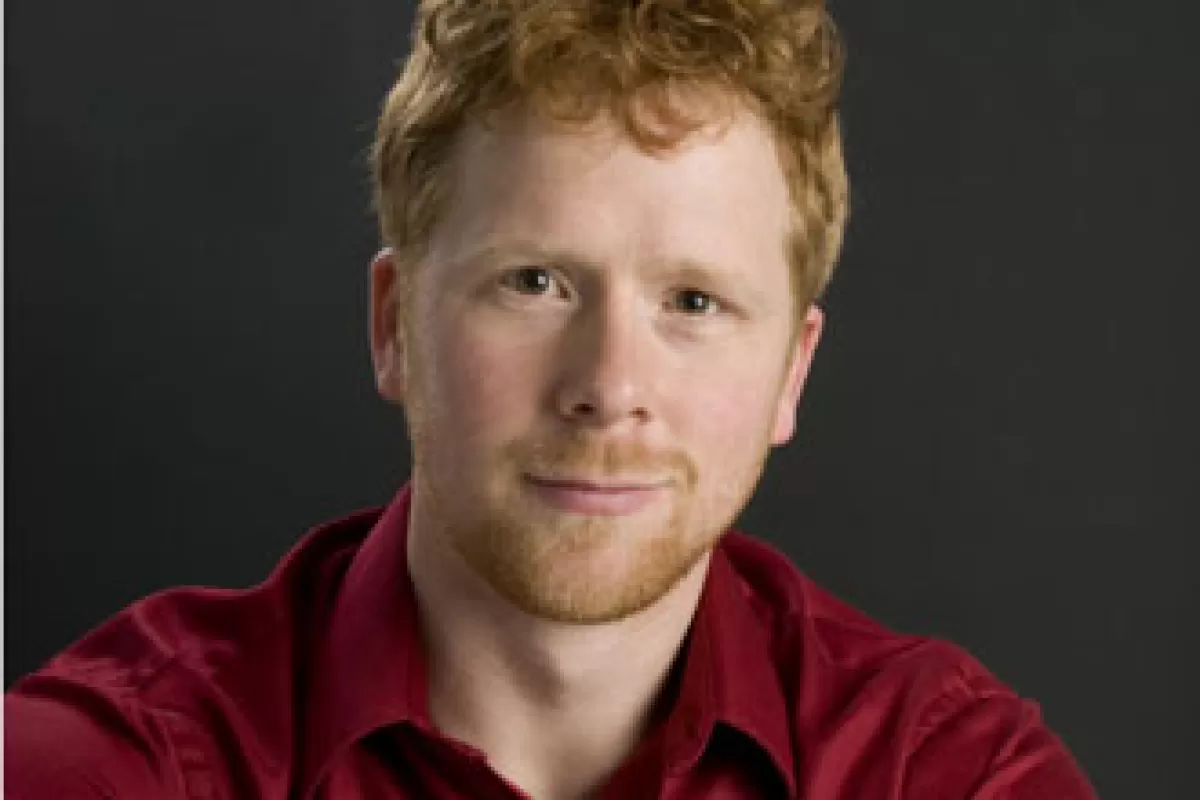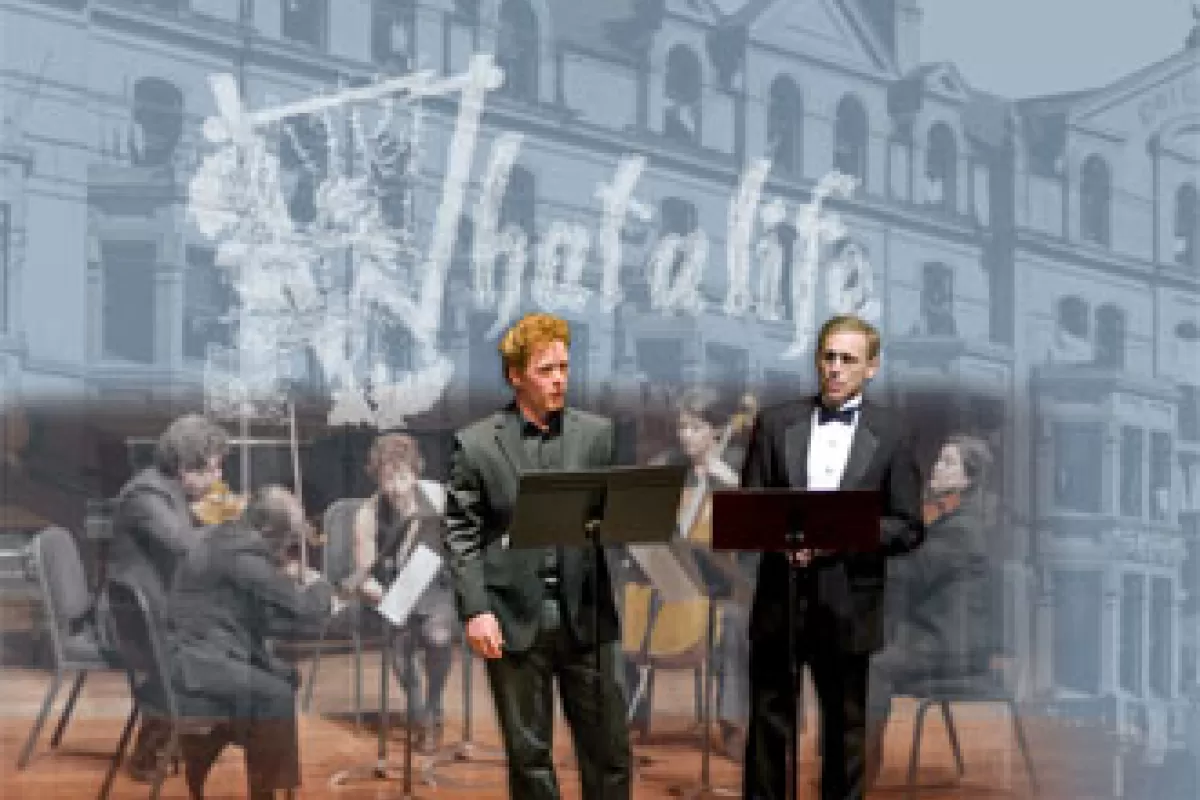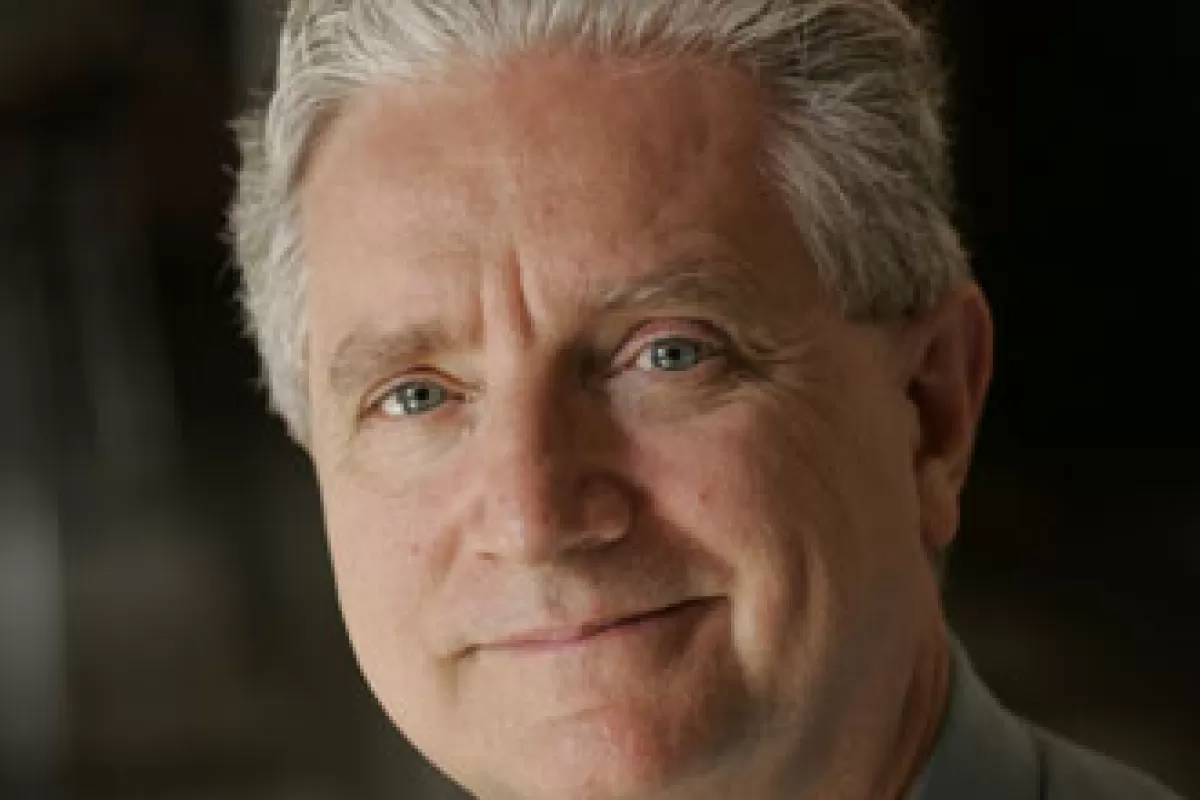Nov 7, 2011 - 12:00 pm
The November 7, 2011 concert’s centerpiece was What a Life!, the Austrian-born composer Hans Gál’s musical parody about life in a British detention camp. Gál’s satiric revue What a Life! was written and performed for the entertainment of Gál’s fellow prisoners in the Isle of Man detention camp during the summer of 1940. The program also includes Gál’s Huyton Suite, Coventry: A Meditation for String Quartet by Vilem Tausky, and Marcel Tyberg’s lushly romantic piano trio, composed in 1936.
ABOUT THE MUSIC
Coventry: Meditation for String Quartet (1941)
Vilem Tausky
(b. Prerov, Czechoslovakia, 1910 – d. London, England, 2004)
Vilem Tausky was born into a musical family. His mother was a singer who had worked with Gustav Mahler; his uncle was the operetta composer Leo Fall. Tausky could list Franz Lehár, Oscar Straus, and Antonín Dvořák’s widow Anna among his childhood acquaintances. As a student of the elderly composer Leoš Janáček at the Brno Conservatory, Tausky went to work at the Brno Opera as a répétiteur, accompanying singers on the piano and coaching them during rehearsals. After stepping in for a sick conductor and leading a performance of Turandot at just 19, he found regular work conducting.
Tausky fled to Paris—where he was scheduled to conduct Janáček’s Jenufa—after the Nazis invaded Czechoslovakia in 1939. He was engaged by the Ballets Russes de Monte Carlo, but volunteered for the Free Czech Army instead. After the fall of France, Tausky escaped by boat to Great Britain and joined the Czech Army in Exile. (After the war, he was awarded the Czech Military Cross and Czech Order of Merit.) In the post-war years, he led opera companies (Carl Rosa, Welsh National), and the BBC’s variety and concert orchestras, and helped introduce English audiences to Czech music. For over two decades he taught conducting at the Guildhall School of Music and Drama.
While stationed in Warwickshire as a member of the Czech Army in Exile, Tausky was called into Coventry the day after the November 1940 air raid to help search the ruins for survivors. The courage of the British people in the blitz inspired him to write the haunting Coventry: Meditation for String Quartet. This elegy, a musical meditation on the horrors of war, is based on the St. Wenceslas chorale, an iconic Czech musical symbol. The work was first performed in 1942 by the Menges Quartet at a Dame Myra Hess lunchtime concert at the National Gallery in London.
Huyton Suite, Op. 92 (1940) and What a Life! (1940)
Hans Gál
(b. Brunn am Gebirge, Austria, 1890 – d. Edinburgh, Scotland, 1987)
In sober moments it is clear to me that I am mad. Here I am, writing music, completely superfluous, ridiculous, fantastic music…while the world is on the point of coming to an end. Was ever a war more lost than this one now? – Hans Gál, diary entry: 12 June 1940 (Huyton Transit Camp, near Liverpool, England)
Fearing a German invasion, the British wartime government began the internment of thousands of foreign nationals from Nazi-controlled Europe as “enemy aliens”. The roundups included many Jewish refugees fleeing Nazi terror, who were thrown together indiscriminately with actual Nazi sympathizers. A substantial number of internees were deported to Canada and Australia, and some died when their ships were torpedoed.
The 50-year-old Hans Gál, Jewish composer and scholar, was among those held as a prisoner by British authorities without any suspicion that he posed a security threat or had committed a crime. Gál was released after four and a half months’ detention, and despite his experience he chose to live in Britain for the rest of his life. He attained an important position at Edinburgh University, where he was also awarded an honorary doctorate. Gál became a vital force in Edinburgh’s musical life; leading the Edinburgh Music Festival was just one part of his legacy.
Gál was born on a summer holiday at a village outside Vienna. He didn’t begin his musical studies until his early teens. At fourteen he heard Wagner’s Meistersinger overture and “went through a violent fit of Wagnerism, as if it had been measles,” he wrote later.
Gál studied music history and theory at the New Vienna Conservatory, where he began composing. In 1915, his musical life was interrupted when he was drafted into the Austro-Hungarian army. He was appointed Director of the Mainz Conservatory in 1929, but his charmed musical life came to an abrupt halt with the Nazi takeover four years later. He was immediately dismissed from his post. (At a 1933 concert commemorating the 50th anniversary of Wagner’s death, Gál had been seated near Hitler. He studied Hitler’s face and concluded that nobody could take him seriously.) Gál survived, miserably, in Austria until 1938, when he fled to England with his family—and toward his summer of internment.
The cheerful Huyton Suite stands in contrast to the harsh circumstances of its creation in the Huyton Transit Camp, near Liverpool, where Gál’s internment began. He scored the work for flute and two violins because he had access to only those instruments; in his diary Gál wrote of how he needed to conserve scraps of manuscript paper. The flute plays a “roll call,” reflecting the prisoners’ daily routine. Rehearsals in the camp were interrupted first when two musicians were deported suddenly to Canada, and a second time when some were transferred to the Isle of Man.
Gál created the satiric revue What a Life! for the entertainment of his fellow prisoners in the Isle of Man detention camp. The revue mocks the cruel absurdity of the camp’s very existence, and describes the stresses and strain of imprisonment with no fixed release date. After a jovial entrance march, more serious numbers mingle with the irony-laced “Barbed Wire Song” (“Why are human beings behind a wire?” the lyrics inquire) and the “Song of the Double Bed.” The verses of “Ballad of the German Refugee,” recounting the struggles of people uprooted and displaced yet again, were written by internee Otto Erich Deutsch, the great Schubert scholar.
What a Life! was first performed on September 2, 1940 in the Central Promenade Camp on the Isle of Man, with the musical numbers interspersed with a theatrical script by another internee, the noted film director Georg Höllering. Like everything else, the production was subject to the censorship of camp authorities. Two amateur actors, middle-aged Jews, were chosen to portray refugees from Berlin who meet each other again as internees in the camp. A second performance planned for the next day was postponed, and the delay gave Gál and Höllering an opportunity to restructure the revue and rewrite several of the numbers. In the meantime, many of the original cast members were sent elsewhere or released. Eventually the second performance was rescheduled for September 26th; in a bizarre twist of timing, Gál’s release for medical reasons was approved for that same date. Committed to the performance, and in solidarity with his comrades, Gál pleaded for permission to remain an “enemy alien” and stay in the camp for one more day. His request was granted, and the proceeds of the performance went to benefit air-raid victims on the mainland.
Gál’s musical score to What a Life! was found among his belongings after his death. Unfortunately, though, Höllering’s script has not been recovered. Tonight we perform musical selections from What a Life! with dramatic narratives that we have selected from Gál’s eloquent internment camp diary. We express our sincere thanks to David Sabritt for compiling the diary entries, interweaving themes of Gál’s sense of betrayal, his loss of freedom, his fears about the fate of his son Franz, and the absurdity of it all.
Music of Remembrance is grateful to the Gál family – the composer’s daughter Eva Fox-Gál, her husband Dr. Anthony Fox and her son Simon – for providing us with music, text and translations of this amazing work. And a special thank you to Bret Werb, musicologist of the United States Holocaust Memorial Museum, for first bringing this work to our attention and sharing its extraordinary performance history. What a Life! is at the same time an engaging parody and a window on a too-little-known injustice that should give us all cause for reflection.
Piano Trio (1936)
Marcel Tyberg
(b. Vienna, Austria, 1893 – d. Auschwitz, 1944)
Composer, conductor and pianist Marcel Tyberg was the son of a noted violinist father and pianist mother, but many details of his early life are not known to us. Born in Vienna, Tyberg moved with his family to Abbazia, a resort town on the Adriatic coast. The town passed from Austrian to Italian control in 1920, and today is part of Croatia.
Tyberg wrote his First Piano Sonata in 1920 and First Symphony in 1924. At Abbazia, he composed a series of works, including the Trio we hear tonight. To support himself and his mother he was a church organist, music teacher, composer of dance music (rumbas, tangos, slow waltzes), and performer with the Abbazia Symphony Orchestra.
Tyberg’s fate was sealed on September 7, 1943, when the collaborationist Croatian government received German orders to enforce Nazi racial laws. (Eleven days later Tyberg completed his final work, the Third Symphony.) Some time that summer, his mother had registered with local officials the fact that her great–grandfather was a Jew, making Marcel—who had written at least two masses, and composed his Te Deum to consecrate the renovated Abbazia church—one–sixteenth Jewish. He was taken in a night raid by the Gestapo and vanished. Records indicate that that he died at Auschwitz on December 31, 1944.
Anticipating his capture, Tyberg entrusted all of his compositions and writings to his friend Milan Mihich. After the war, Mihich fled Yugoslav communist partisans to Milan, bringing Tyberg’s manuscripts with him. When Mihich died in 1948, responsibility passed to his son Enrico, then a medical student and also Tyberg’s former harmony student. Dr. Enrico Mihich’s distinguished career as a medical scientist brought him to the Roswell Park Cancer Center in Buffalo, N.Y., where he still keeps Marcel Tyberg’s music secure in his home. For decades, Dr. Mihich worked tirelessly in search of funding to create performance-ready scores from the fading, handwritten documents. With the help of the Foundation for Jewish Philanthropies and the Buffalo Symphony Orchestra’s JoAnn Falletta beginning in 2005, Tyberg’s music can now be heard by a new generation. A special thanks to Zachary Redler for providing MOR with performing scores of the piano trio.
About Music notes by Mina Miller. Copyright 2011 Music of Remembrance
